
Old town hall (Old Town Hall, German title: Altes Rathaus) is one of the sights of Munich and situated on the Central square of the city of Munich (Marienplatz), closing the Eastern part of the area.
On the Marienplatz, only a few dozen meters from the Old town hall, is the New town hall (Neues Rathaus). Since the New city hall designed in the Gothic revival style, and the Old town hall looks more modern, that sometimes the guests of the city the question arises: "What kind of town is older?". Older - Old town hall, it dates back to the 14th century and is the forerunner of the New town hall, erected at the turn of the century: late 19th and early 20th centuries In the tower of the New town hall is a circular observation deck, granting panoramic views of Munich, including Marienplatz and the very Old town hall. Read more about the New town hall and lookout.
Also, a little more than 100 metres from the Old town hall is the Church of St. Peter, in the tower-bell tower which has an observation deck, which offers stunning views, including two town hall of Munich. Read more about St Peter's Church and lookout.
View of the Old town hall, St. Peter's Church and partly on the Marienplatz from the observation tower of the New town hall
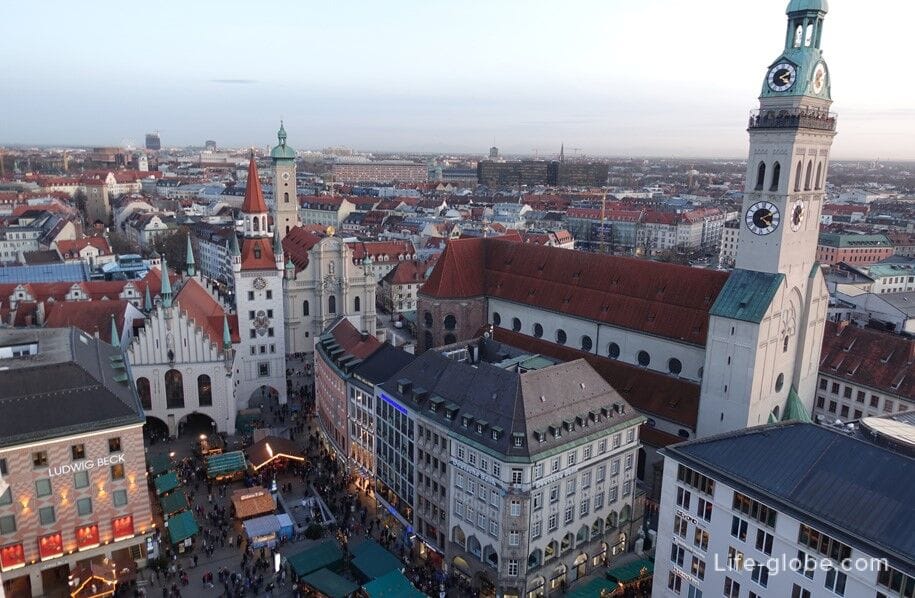
The history of the Old town hall began in 1310. Town hall arose in part from an old Munich city fortifications, including: the former tower gate - Alburger (Talburgtor), built in the late 12th century and were part of the first city wall of medieval Munich, was converted into the town hall tower, 56 meters high.
In subsequent town hall was reconstructed and transformed. During the Second world war the town hall was badly damaged. During the reconstruction followed partly in the Gothic style of the 15th century, was therefore used tall Windows and elements in neo-Gothic style. Preserved statues of Ludwig of Bavaria - on the Western facade of the town hall and of Henry the Lion - on the East facade. Two facades of the town hall tower (West facing sun terrace and East facing to the street tal) in Munich is decorated with coats of arms and round the clock.
In the Old town hall and the adjacent tower has three arched passage, which connects Marienplatz with street tal (Tal), which, in turn, leads to the Eastern city gate - Isartor gate (Isartor), which marked the Eastern edge of the old town of Munich.
The Western facade of the Old town hall, overlooking the Marienplatz
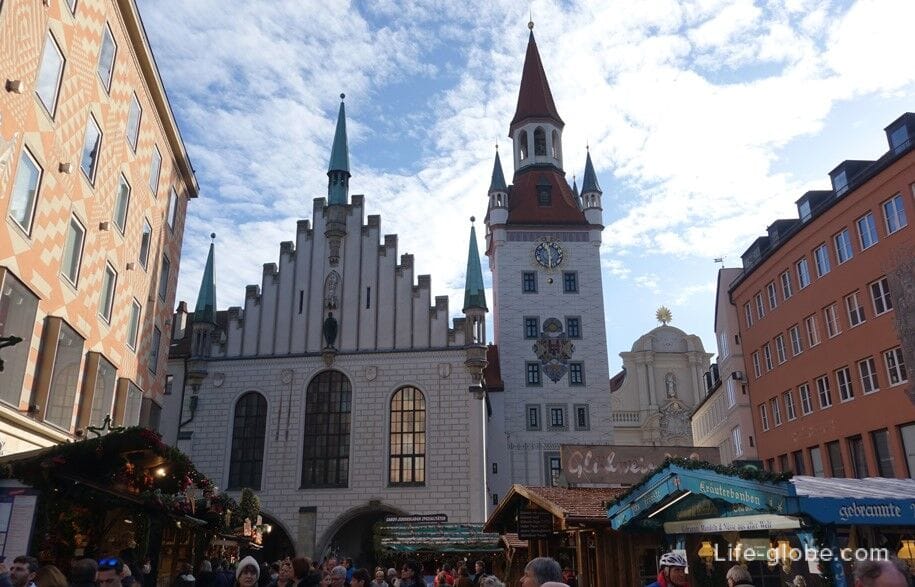
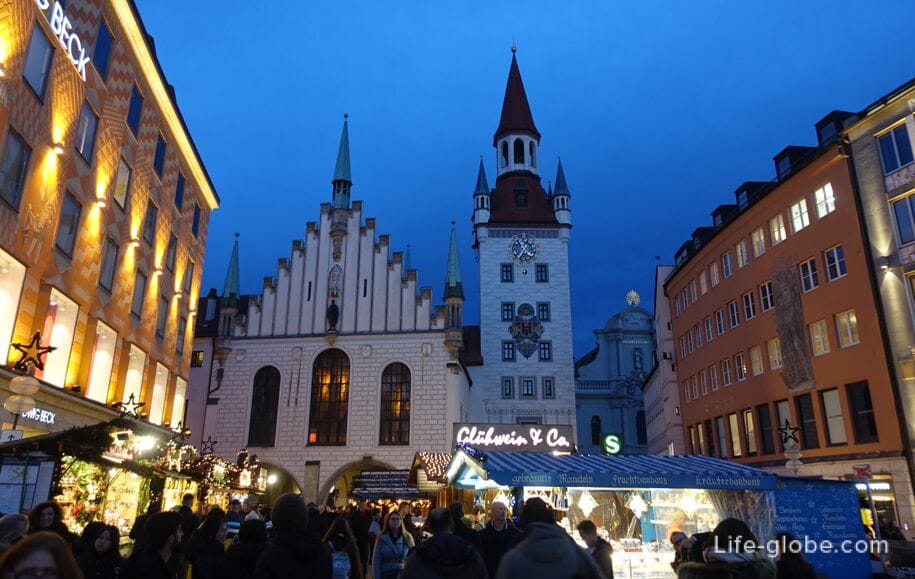
The Eastern and southern facades of the Old town hall
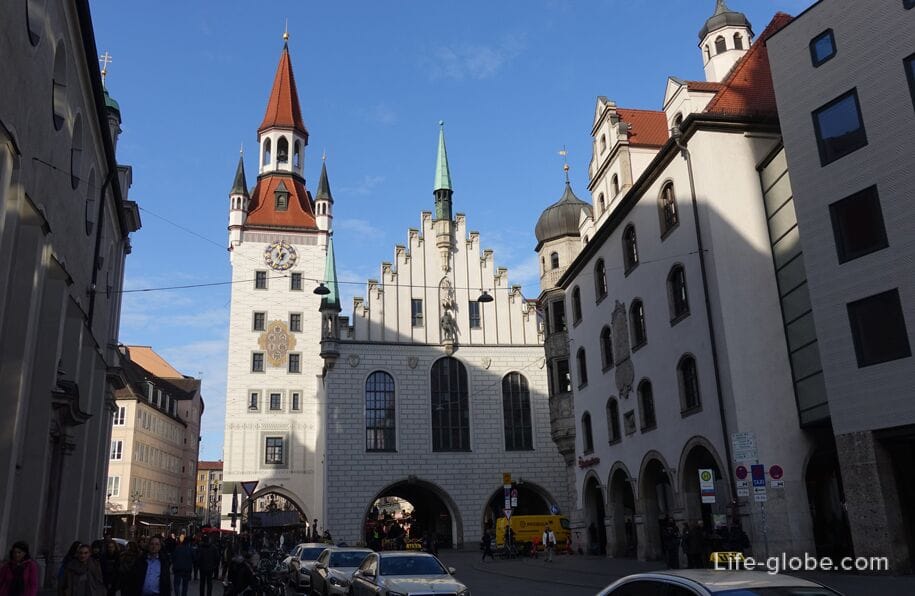
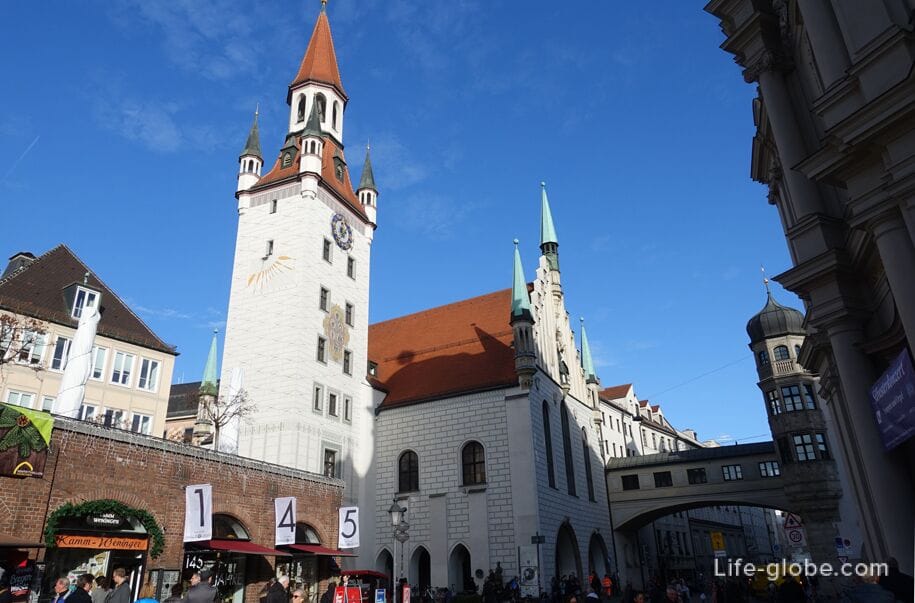
Near side (South) facade of the Old town hall is the famous sculpture is the bronze statue of Juliet (Julia-Capulet Statue).
On the left, the arm bent, Juliet often holds flowers and raises the right long dress.
Right breast of the statue nterta to Shine. And all because: 1. This is one of the most photographed monuments in Munich and many people want to touch the symbol of eternal and tragic love; 2. There is a belief that if you RUB the right breast of Juliet, you will be happy in love.
Statue of Juliet were donated to Munich's sister city Verona. As evidenced by the oval plate installed on the wall of the hall near the sculpture.
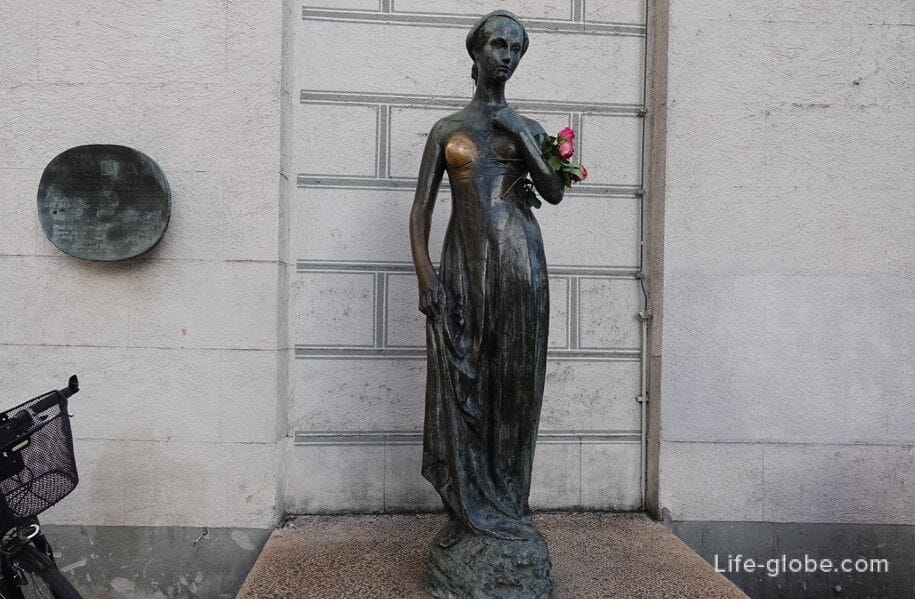

Until 1974, the walls of the Old city hall houses the city administration, have not yet moved to the building of the New town.
Today part of the Old town hall is a toy Museum (Spielzeugmuseum), situated on four floors of the town hall tower.
Private family collection of Ivan Steiger demonstrates the development of toys over four centuries. At the Museum: dolls, model trains and cars, bears, planes, wooden and tin toys, Barbie, robots, etc.
Admission to the toy Museum:
- children from 4 to 17 years old - 2 Euro;
- adults - 6 Euro;
- family ticket (with children up to 17 years) - 12 Euro.
The website of the toy Museum: spielzeugmuseummuenchen.
Notable in the walls of the Old town hall Ballroom (Festsaal Der), which is also known as Big or Dance hall and is located on the ground floor of the town hall.
From 1476 Ballroom was one of the architectural masterpieces of the Munich Gothic style.
The room is impressive thanks to the elaborately decorated wooden ceiling, which features various wooden carvings and coats of arms of Bavarian noble families such as the house of Wittelsbach. Particularly noteworthy are originally created by Grasser sculptures of dancers "Moresca" is a popular in the 15th century dance. Today in the ballroom of the copies of the figures. The original 10 of the 16 figures are in the Munich city Museum (Münchner Stadtmuseum), located on the square in St.-Jacobs-Platz (Sankt-Jakobs-Platz).
Today, the ballroom serves as a representation for city Council and mayor. The hall also hosts a variety of banquets and ceremonies, including ceremonies.
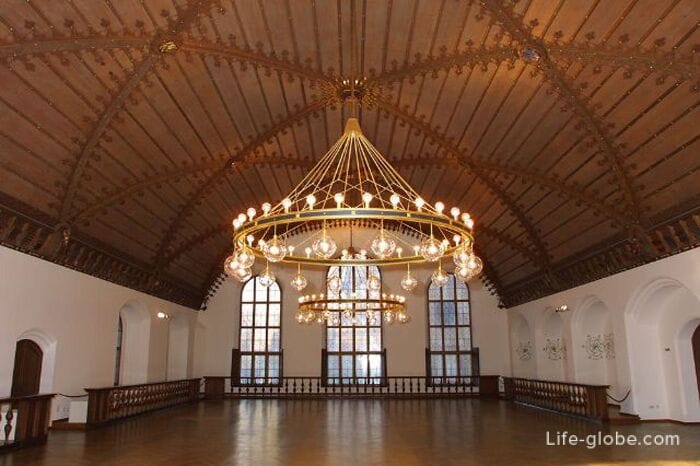
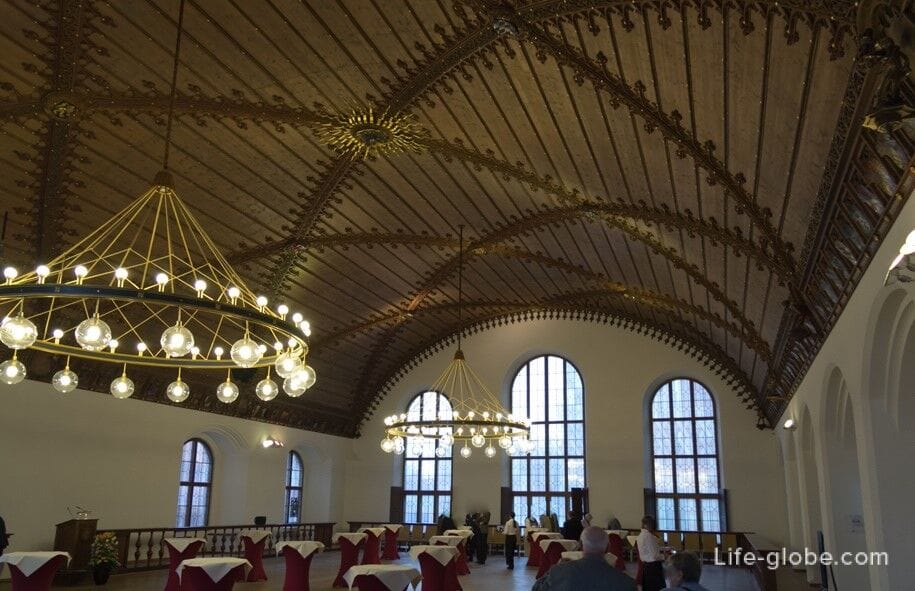
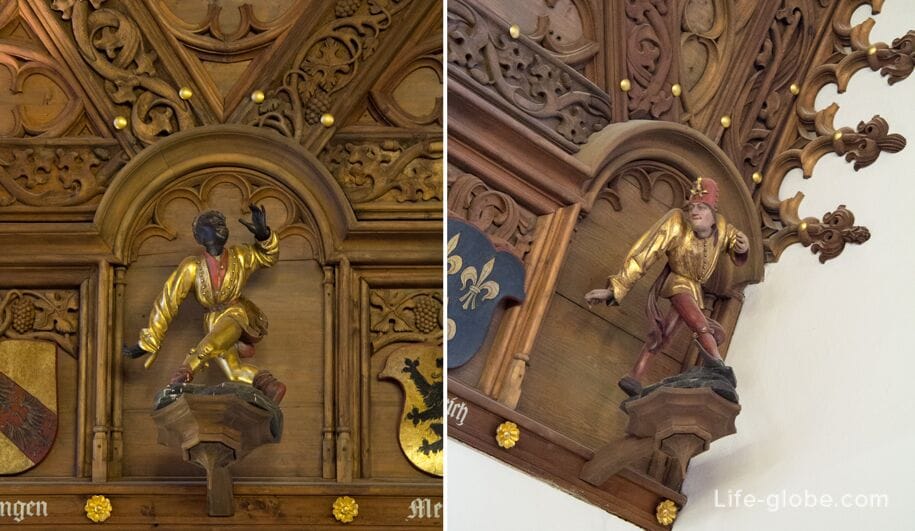
Address Old town hall: Marienplatz, 15.